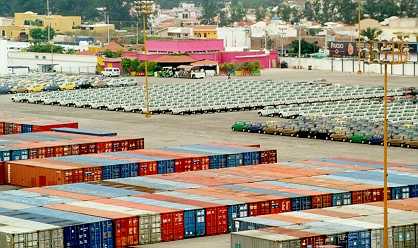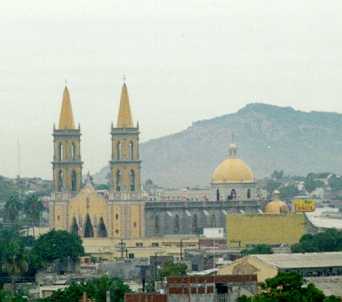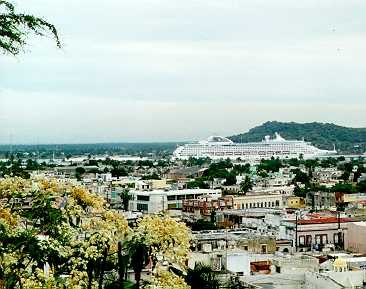|
|
|
||||||||||



|
Greetings from Mazatlan 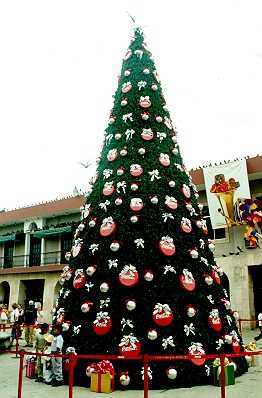 "Long before the Spanish conquest, present day Mazatlan [meaning "land of the deer" in the ancient Nahuatl language] was known by navigators as "Island of Mazatlan" because the region was dotted by estuaries, hills and lakes that gave the impression of a small island.Colonial Mazatlan was the cradle of culture on Mexico's Pacific Coast.
Immigrants from Spain, France, Italy, Germany, China and the United States founded a progressive center of commercial development and cultural refinement unique on the West Coast" (Welcome to Mazatlan, December 20, 2001). 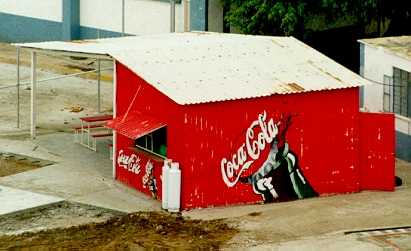 Today, everything goes better with Coke;) 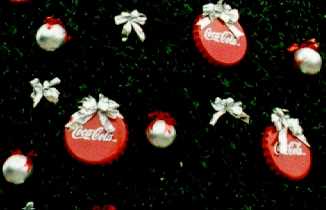 On my visit to Mazatlan on December 12, 2001, many of its citizens were celebrating the Feast of Our Lady of Guadalupe. "In 1531 a "Lady from Heaven" appeared to a poor Indian at Tepeyac, a hill northwest of Mexico City; she identified herself as the Mother of the True God, instructed him to have the bishop build a temple on the site and left an image of herself imprinted miraculously on his tilma, a poor quality cactus-cloth, which should have deteriorated in 20 years but shows no sign of decay 469 years later and still defies all scientific explanations of its origin. It apparently even reflects in her eyes what was in front of her in 1531! Her message of love and compassion, and her universal promise of help and protection to all mankind, as well as the story of the apparitions, are described in the "Nican Mopohua", a 16th century document written in the native Nahuatl language. 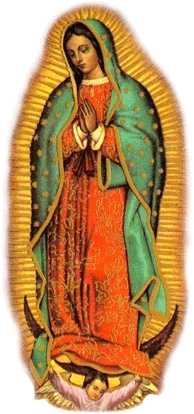 There is reason to believe that at Tepeyac Mary came in her glorified body, and her actual physical hands rearranged the roses in Juan Diego’s tilma, which makes this apparition very special. An incredible list of miracles, cures and interventions are attributed to Her. Yearly, an estimated 10 million visit her Basilica, making her Mexico City home the most popular Marian shrine in the world, and the most visited Catholic church in the world next to the Vatican."
On the day I was in Mazatlan, families brought their very young boys (dressed out with serapes, hats and false mustaches) and their very young girls (dressed out in white dresses, with colorful scarfes and boxes on their backs) to have their pictures taken sitting on a wooden donkey in front of various religious portraits - much as families in the United States have pictures of their children taken with Santa Claus. Families at the Basilica were given the opportunity to purchase pictures of their youngsters on religious calendars, key rings, and the like. In the United States, there are not as many options for purchasing pictures, although the pictures themselves are sometimes accompanied with free Britney Spears Pepsi cups. The Christmas tree in the picture above stood on the city square across from the Basilica and no doubt was funded by Coca Cola. The Coca Cola shed in the picture above rests in the fenced off section where ships off load industrial products and passengers from tourist cruises. The shed is about the same size as the casitas on a hill overlooking Mazatlan where the picture of the Sea Princess below was taken.
The number of beggars I saw in Mazatlan was surprisingly small, different from my memories of Monterey and Mexico City. Was this because of the area of town that we visited, or do they clear out beggars on the days the cruise ships visit (much as we do in North America for significant political or cultural events)? There was no one to ask. I also saw a number of open vehicles carrying camouflaged men with guns, men who did not appear to be on a hunting or fishing expedition. Several days later, aboard the Sea Princess, Nation columnist Christopher Hitchens argued in a discussion of "The Future of the Left" that there is no international socialist movement, there is no working critique of capitalism and that "capitalism is the only revolutionary force left" in the world today (Christopher Hitchens, December 13, 2001). Hitchens, who no longer views himself as a member of the left but still bills himself as an unreconstructed Marxist, touts the positive values of historical materialism. In letters to a young contrarian (Basic Books, Cambridge, Massachusetts, 2001), Hitchens notes, The essential element of historical materialism as applied to ethical and social matters was (and actually still is) this: it demonstrated how much unhappiness and injustice and irrationality was man-made. Once the fog of supposedly god-given conditions had been dispelled, the decision to tolerate such conditions was exactly that - a decision. The West, he says, at least, has happily never recovered from this discovery.... In a Friday afternoon panel aboard the Sea Princess, Hitchens argued in a discussion of "Freedom vs. Fundamentalism: US Foreign Policy and the "War" on Terrorism" that we are the first generation that is post-religious and that racism and creationism are dead, though they'll be dug up. "Religion," Hitchens said, "is the enemy. Religion is sinister nonsense." And we cannot allow Osama bin Laden to get away with importing "a religious war within Muslim countries" into the United States (Christopher Hitchens, December 14, 2001). What do you think? Do you think capitalism is the only revolutionary force left in the world today? Do you think religion is the enemy? [Hitchens specifically included all religions, from Quakers (i.e. the Religious Society of Friends) to Islamic fundamentalism.] What do you think of capitalism's incorporation of religious symbols as expressed by the Coca Cola holiday tree in Mazatlan shown above or by Britney Spears, Pepsi, and Santa Claus in Charlottesville, Virginia's Fashion Square Mall? Please send your thoughts to george@loper.org where the most representative
comments will be placed on my web site with full attribution.
|

